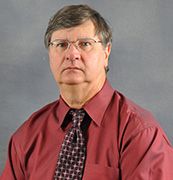Lester W. Strock Award to Be Presented to S. Michael Angel at SciX 2019
S. Michael Angel, a professor of chemistry at the University of South Carolina (Columbia, South Carolina), will be presented with the Lester W. Strock Award on Tuesday, October 14, at SciX 2019, in Palm Springs, California.
S. Micheal Angel

S. Michael Angel, a professor of chemistry at the University of South Carolina (Columbia, South Carolina), will be presented with the Lester W. Strock Award on Tuesday, October 14, at SciX 2019, in Palm Springs, California. The award is given by the New England Section of the Society of Applied Spectroscopy in recognition of a selected publication of substantive research or application of analytical atomic spectrochemistry in the fields of earth science, life sciences, or stellar and cosmic sciences.
Angel received his PhD from North Carolina State University and carried out postdoctoral work at the Lawrence Livermore National Laboratory (Livermore, California). His research group focuses on the areas of remote and in situ laser spectroscopy with a focus on deep-ocean, planetary, and homeland security applications of Raman and laser-induced breakdown spectroscopy (LIBS). Among the group’s recent work is the development of a spatial heterodyne Raman spectrometer (SHRS), and exploration of miniature SHS spectrometers for deep UV Raman, remote Raman, and LIBS, underwater LIBS, and for use on future planetary landers and SmallSats.
To see Spectroscopy’s interview with Angel on developing spectroscopy instruments for use in extreme environments, please click here.
Best of the Week: Exclusive on Flow Imaging Microscopy, Interview with PNNL Chief Science Officer
April 4th 2025Top articles published this week include several interviews with key opinion leaders on various topics including advanced mass spectrometry (MS) technologies in studying diseases, microplastic detection, and interpreting Raman spectra.
New Multi-Spectroscopic System Enhances Cultural Heritage Analysis
April 2nd 2025A new study published in Talanta introduces SYSPECTRAL, a portable multi-spectroscopic system that can conduct non-invasive, in situ chemical analysis of cultural heritage materials by integrating LIBS, LIF, Raman, and reflectance spectroscopy into a single compact device.